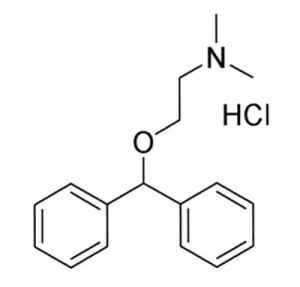While I expected that it was invented by a man named Ben, its originator is actually George Rieveschal. While he was conducting academic research on muscle relaxants (not allergy inhibitors), he realized that his formula blocked Histamines and thus lessened the impact of itching and inflammation. Rieveschal pursued his research at Parke-Davis drug manufacturing, and Benadryl became available with a prescription in 1946. For his invention, he received a 5% royalty during the initial 17-year patent period, but not any income after the product became over-the-counter and reached $180 million in sales.
You might expect that Rieveschal was a medical doctor or at least had medical training. Actually, his initial degree was from the Ohio Mechanics Institute of Technology and he sought his first job in commercial art. Fortunately for those with allergies or itches, it was the Great Depression and no art jobs were to be found, so he went back to school and pursued chemistry. He was a chemical engineering professor when he made his initial discovery.
Those in higher education speak to students all the time about how a choosing a major should not be the major decision than it is made out to be. Rieveschal is a great example of a circuitous path that led to great things, and I am sure the diversity in his education aided in his research.
Regardless of what you studied or what your current career is, pursue your interests with a passion. The next miracle creation could be yours.
To learn more: George Rieveschal, 91, Allergy Reliever, Dies by Dennis Hevesi, The New York Times, September 29, 2007.
P.S. The name Benadryl comes from the technical name of the formula: beta-dimethylaminoethylbenzhydryl ether hydrochloride.

No comments:
Post a Comment